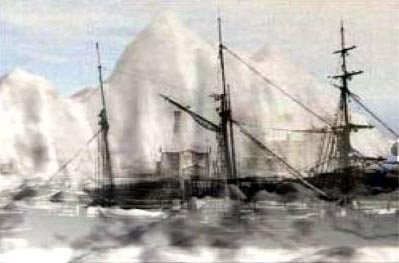This morning I walked the forest's trails, searching for symbols, so to ask, "What does this mean?," and received no reply. The sky darkened above the arms of trees bending at improbable angles, testing their tensile strength. My left shoulder was not solid land but one of the huge ice islands, miles across and more than a hundred feet thick, that periodically break off from the ice caps of Ellesmere Island and Greenland and get caught in the slow vortex of the Beaufort Gyre, making two or three circuits of the Beaufort Sea—each one decades long — spasmed with the din of pain. Eyes tired of cold green moss, hungry for variant colors, I followed the twin tracks of a baby carriage down a rocky slope. Walking further, everything looked familiar, until I heard, "Have you seen this rock's thousand faces? Can you sense that fallen tree is missed by its upstanding neighbors? Do you know that the name of a worm eaten by a bird becomes the bird's name too?"
I looked behind men and women
deep into what's hidden
smoothing wrinkles my boot-thong
loose I could hear the voice say keep going
 |
|
Returning to Europe, to a hero's welcome, Dr. Karl Weyprecht lectured on the need to scientifically study the Arctic. In 1881, his efforts finally resulted in the First International Polar Year, during which eleven countries established fourteen stations around the Arctic, from which not all the scientists and support teams returned.
Weyprecht died before his dream was realized. Now it's February 2007. Looking out a window twelve stories
high, the sky an unbroken sheet of gray, raindrops channeling down the doubled glass as if on the bridge of a
mighty ice breaker sailing over buildings and mountains beyond, another International Polar Year begins.